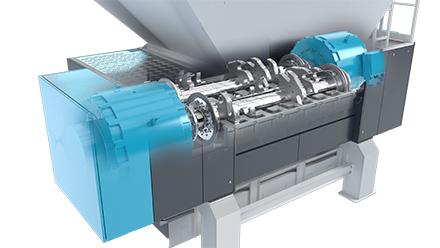Vecoplan’s new VRZ shredder stands out due to its use of a rotor instead of conventional cutting tools, this unit is equipped with sickle-shaped ripper teeth. As a result, the machine can even break up and shred wired bales of different materials. Source: Timberbiz
The developers placed great emphasis on a robust design. Little maintenance is required – and if any work is needed, it is quickly completed.
“At our customers, the shredders usually work uninterrupted for a very long period,” said Martin Baldus, Head of Industrial Shredding development at Vecoplan AG.
“During the development of the new VRZ series shredder, we placed great emphasis on making it robust, resistant to intrusive materials, reliable and low-maintenance.”
That is why the developers did not equip the rotor with cutting tools but with sickle-shaped ripper teeth. These rip the material apart – the VRZ can even handle wire-wrapped bales reliably.
As a result, this extremely powerful machine is also suitable for reprocessing waste wood – for example for the efficient shredding of root bales or entire planks and beams, which often contain tramp materials such as nails.
For the rotors, Vecoplan makes use of the dynamic, high-torque, quick-start HiTorc drives. These have no mechanical components such as belts, clutches or hydraulic units. This means that they require very little maintenance unlike hydraulic drives.
Because there is less mass to be propelled, they achieve a high level of efficiency. Operators therefore enjoy considerable energy savings. The drives, which have a capacity of 2 x 138 kilowatts, are completely insensitive to tramp materials. They are also dynamic, thereby improving start-up and reversing behaviour. This means that the VRZ is also suitable for tough, difficult materials.
“During the development phase, it was important for us to keep the operating and maintenance costs for plant operators as low as possible,” Mr Baldus said.
“Components such as wear-resistant and replaceable sealing elements at the rotor and side wall prevent materials from becoming lodged between the front surface of the rotor and the machine housing.
“The optimised machine design means that the cutting frame and rotors can be replaced quickly. This means that time-consuming maintenance work such as reinforcing welding work can be performed outside of the machine. This considerably reduces downtimes.”






